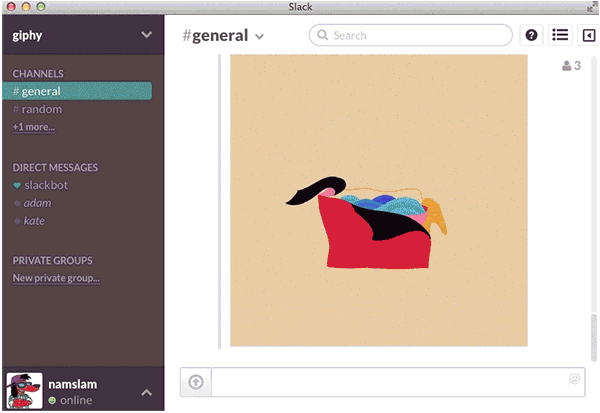

Imagine a support chat channel – wouldn’t it be nice to be notified when people start mentioning “Error”, “Problems” and “Broken” things increasingly frequently? This is where we can make use of Logsene Alerts and its ability to do anomaly detection. This will very quickly render top users and channels for you: But … did you know, that Logsene comes with a nice ad-hoc charting function? Simply open one of the Slack messages in Logsene, and click on the little chart symbol in the field userName and channel (see below). Now that our Slack messages are in Logsene we can build our Kibana Dashboards to visualize channel utilization, top terms, the chattiest people, and so on. At the same time the messages will also be sent to Logsene and you will see them in the Logsene UI (or your local Elasticsearch server or cluster) right away. Once you run the above you should see new Slack Messages on the console.
#React slack client plus#
Using Logsene means you don’t have to bother running your own Elasticsearch, plus the volume of most team’s Slack data is probably so small that it fits in Logsene’s free plan! 🙂 The LOGSENE_TOKEN is what you can get from Logsene – the “ELK log management service”. # 2 - Index name or Logsene Token from npm start SLACK_WEB_API_TOKEN LOGSENE_TOKEN
#React slack client install#
I packaged this as “ slack-elasticsearch-indexer” so it’s super easy to run: npm install slack-elasticsearch-indexer # Set Elasticsearch Server, btw. Having the JSON output, it can be piped to Logagent-js a smart log shipper written in Node.js.

Simply log in with your Slack account and get all Slack messages! I wrote a little Node.js app to dump the relevant information as JSON to the console or to a file. Then I discovered a better way – the Node.js Slack Client. This looks useful at first, however, this needs a setup per channel or keywords as trigger. The Slack API provides several ways to access data. We’ll use the Slack API, Node.js, React and Elasticsearch in 3 steps:
#React slack client how to#
In this post we’re going to see how to build what we just described. Finally, a simple mobile web page to access only the indexed data from various Teams and Channels might be handy to have, too. What if we could take all Slack messages and index them into Elasticsearch? This would make it possible to perform advanced analytics with Kibana or Grafana, such as getting like top terms used, most active users or channels. Elasticsearch has become a popular data store for analytical queries. For example, I personally miss the ability to search over all teams and all channels and I really miss having no analytics on user activity or channel usage. The ability to add custom integrations is really awesome! Being search experts it is hard for us to accept any limitation in search functionality in tools we use. We’ve been happy with Slack features and especially integrations for watching our Github repositories, Jenkins, or receiving SPM or Logsene Alerts from our production servers through their ChatOps support.

We are ex-Skype users who recently switched to Slack for team collaboration. Application Performance Monitoring Guide.


 0 kommentar(er)
0 kommentar(er)
